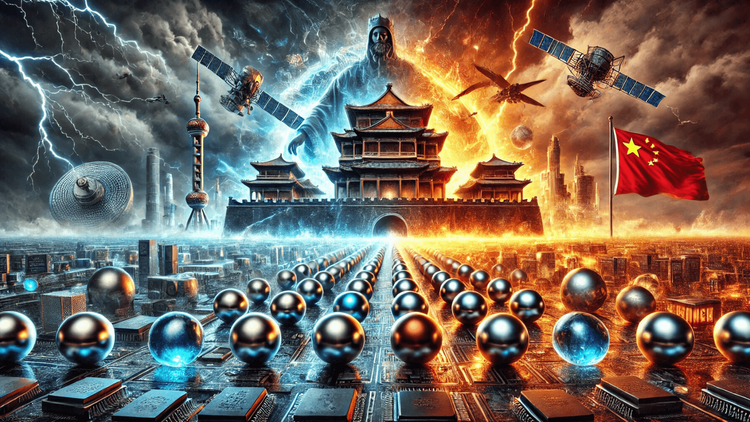The Ripple Effect of China’s Clampdown on Vital Metals
China’s Export Restrictions on Niche Metals Reshape Global Supply Chains and Expose Industry Vulnerabilities

China’s recent decision to restrict exports of gallium, germanium, and antimony to the United States marks a critical escalation in the technology trade war. These metals, though small in market size, play outsized roles in key industries like semiconductors, defense systems, and aerospace technologies. The impact of these restrictions is already rippling through global markets, leaving manufacturers scrambling for solutions and exposing vulnerabilities in Western supply chains.
Gallium: The Semiconductor Keystone
Gallium, a byproduct of aluminum production, is essential for semiconductors and high-tech applications. China dominates the gallium market, producing nearly all of the world’s supply. The recent curbs have driven gallium prices to a 13-year high, creating panic among global manufacturers.
Efforts to diversify gallium production are underway, with companies like Rio Tinto exploring extraction methods in Canada. However, such projects face hurdles, including the need for government support and fears of price collapses if China loosens restrictions. This hesitation underscores the precarious nature of relying on a single dominant supplier.
Germanium: A Critical Mineral Under Threat
Germanium, over 300 times more expensive than copper, is indispensable for satellite technology, night vision systems, and thermal imaging. China’s grip on germanium exports has tightened, leaving traders and manufacturers struggling to secure alternative supplies.
The U.S. has responded by seeking partnerships with countries like Belgium and the Democratic Republic of Congo. Umicore SA, for instance, is working with Congo to refine germanium from mine waste. Despite these efforts, the transition to new supply chains will take time, leaving industries vulnerable to shortages and escalating costs.
Antimony: A Munitions Essential
Antimony, a critical component in munitions, has also come under China’s export restrictions. While alternative sources exist in countries like Tajikistan and Turkey, their production volumes are insufficient to replace Chinese supply.
The U.S. Department of Defense has backed Perpetua Resources Corp. to develop an antimony mine in Idaho, but the project is years away from becoming operational. Meanwhile, companies like United States Antimony Corp. are struggling to source raw materials, leaving the defense sector in a precarious position.
The Ripple Effect: Rising Prices and Supply Chain Strain
The broader implications of China’s restrictions extend beyond these three metals. Prices for gallium, germanium, and antimony have soared, while traders report dwindling inventories. Manufacturers are increasingly turning to recycling and alternative materials, but these stopgap measures cannot fully address the supply crunch.
Western governments are under pressure to develop robust supply chains for critical minerals. This includes offering financial incentives to new producers and establishing strategic stockpiles. However, such measures require significant investment and international collaboration.
Looking Ahead: Could More Metals Be Targeted?
China’s dominance in the critical minerals sector extends far beyond gallium, germanium, and antimony. Analysts warn that Beijing could target other materials crucial for defense and technology, such as tungsten, titanium, and indium. This raises questions about the resilience of global supply chains and the West’s ability to counter China’s strategic moves.
As tensions escalate, industries once complacent about material availability are now grappling with the stark reality of potential shortages. The race is on to secure alternative supplies and reduce dependence on a single geopolitical powerhouse.
Conclusion
China’s export restrictions on gallium, germanium, and antimony have sent shockwaves through global markets. These niche metals, though tiny in volume, are vital to the functioning of modern industries. As prices soar and supply chains strain, the world faces a critical juncture in securing these essential resources. The path forward requires collaboration, innovation, and a steadfast commitment to diversifying supply chains.






